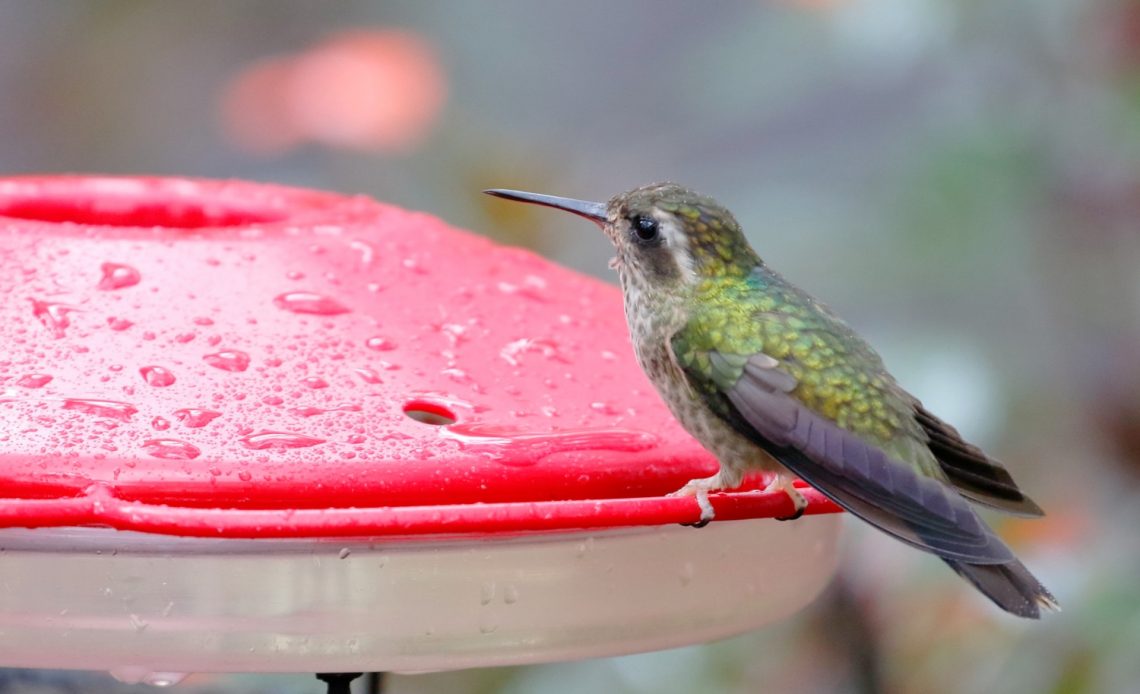

We’re here to help! Wild Yards is a completely free website that is 100% dedicated to helping you create a wildlife-friendly, sustainable yard. Read more
WildYards is reader-supported. When you buy a product through a link on our site, we may earn a comission. Every product is independently selected by our (obsessive) editors and our reviews are unbiased and objective. Read more about our mission or our privacy policy.
Hummingbirds are one of the true joys of the natural world. We love planting new flowers in the spring and waiting to see which ones the migrating hummingbirds like the most when they pass through our states. If hummingbirds are a regular attraction in your backyard, it’s important to know what’s normal behavior for them and what isn’t, so you can step in and lend a helping hand if need be. If you’re wondering how to help an injured hummingbird, here are a few things that you can do.
You can help an injured hummingbird by carefully moving it to a quiet, calm place, offering it some nectar, and giving it time to recover. In severe cases, you can help an injured hummingbird by contacting a wildlife rescue.
How to tell if a hummingbird is injured
It’s usually not hard to tell if a hummingbird is injured. Often, the hummingbird will be lying on the ground next to something, either a car, a house, or some other structure.
In these cases, it’s more than likely that the hummingbird flew into a window thinking its reflection was actually another hummingbird, and hoping to chase it away.
If you find a hummingbird on the ground, and you’ve double-checked to make sure it’s not dead, then it’s probably just stunned. These hummingbirds usually recover if given some time and extra TLC.
But sometimes when hummingbirds are injured, they can keep flying around. Hummingbirds that have suffered an injury to their beaks or legs may still be able to hover around your feeders and engage with other hummingbirds.
Eventually, though, these hummingbirds will get tired and take a break. Hummingbirds that have injured their wings may also rest for hours on your feeders.
Injured hummingbirds may lean forward to take the weight off of their injured wings or legs. They may hold the injured appendage out at an awkward angle.
They may keep their beaks open if they’ve sustained an injury to their mouths, and they may have dull feathers because they’re unable to keep them clean.
If you suspect that a hummingbird is hurt, try to get a closer look. If you notice a discharge coming from the bird’s eyes, nose, or beak, or if you see bare spots in its plumage, there’s a good chance the hummingbird is sick, not injured, in which case, you should contact a wildlife rescue immediately for further assistance. Hummingbirds can suffer from a variety of illnesses and may require medical care.
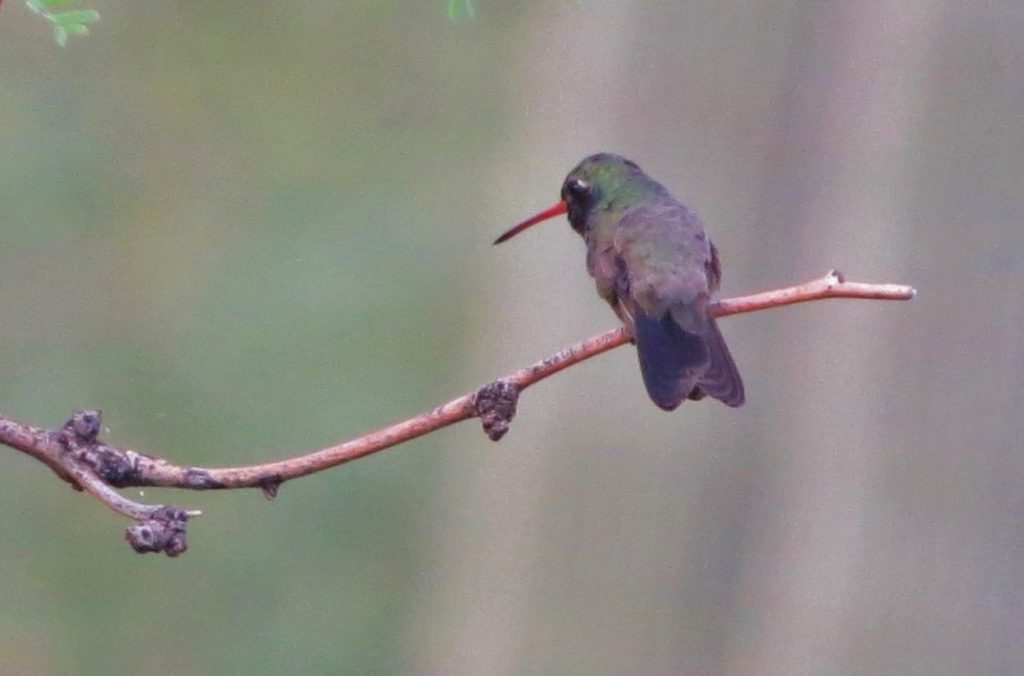
How to help an injured hummingbird lying on the ground
Knowing that a hummingbird is injured is one thing, but knowing how to help an injured hummingbird is another.
If you’ve found a hummingbird lying on the ground, and you’re certain that it’s still alive, then gently pick it up and place it in a shoebox lined with a soft towel.
Note: do not use terrycloth, as hummingbirds may get their claws trapped in the fibers. If you have a pet gerbil or hamster, you can use some of their bedding material to make a cushion for the injured hummingbird instead.
Set the box in a quiet, calm place where pets and predators can’t reach it. Check on the hummingbird every 15 minutes to monitor its condition.
If the hummingbird flew into something, it’s probably just stunned. Giving the hummingbird a safe place to rest will help it recover. If you check on the hummingbird and find it’s upright, try offering it some homemade nectar in an eyedropper so it can get its energy levels up again.
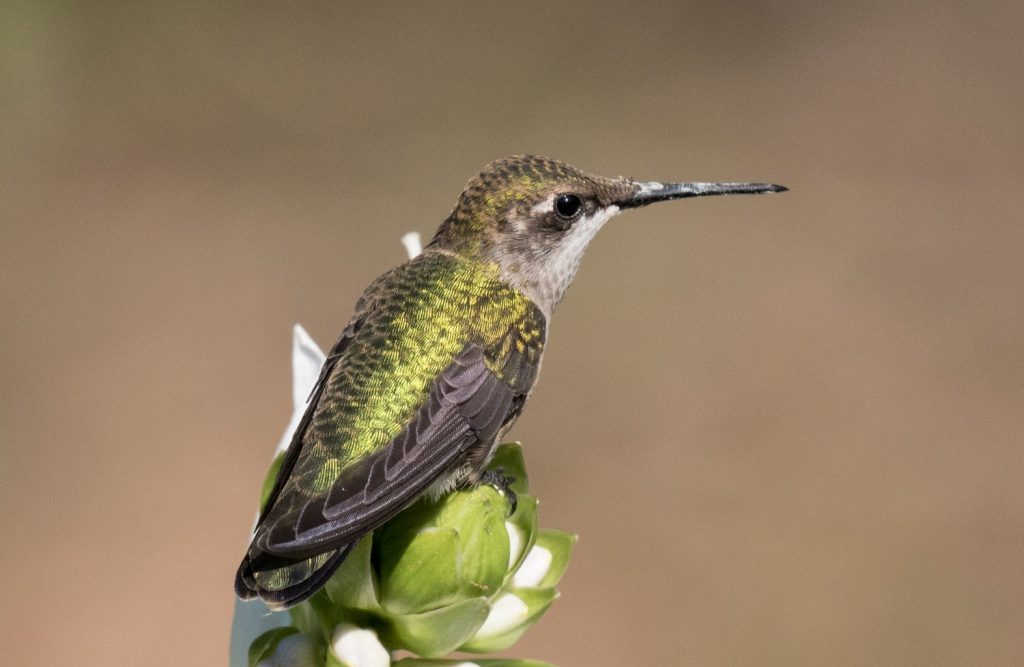
How to help an injured hummingbird sitting on your feeder
Wondering how to help an injured hummingbird on your feeder? The process is much the same as if you were to find a hummingbird on the ground.
Gently transfer the hummingbird to a shoebox lined with something soft and cushy, then offer it something to drink. Don’t force the hummingbird to take any nectar, but if it’s happy to eat, keep offering more.
Examine the hummingbird closely to identify the source of the injury. If its feathers are ruffled on top of its head or on the side of its body, then it probably flew into something, or it might’ve had a close call with a stray cat.
If the injury isn’t severe, then a little rest and sustenance will help the hummingbird recover quickly. Once the bird is feeling better, you can release it back into your garden.
But if the bird’s injury is severe, for instance, if it has a broken leg or wing, then it’s time to call some professionals.
Get in touch with local wildlife rescue for further assistance. If you can’t track one down, check out this website. You can also try contacting a local small animal vet. They may have resources that can help.
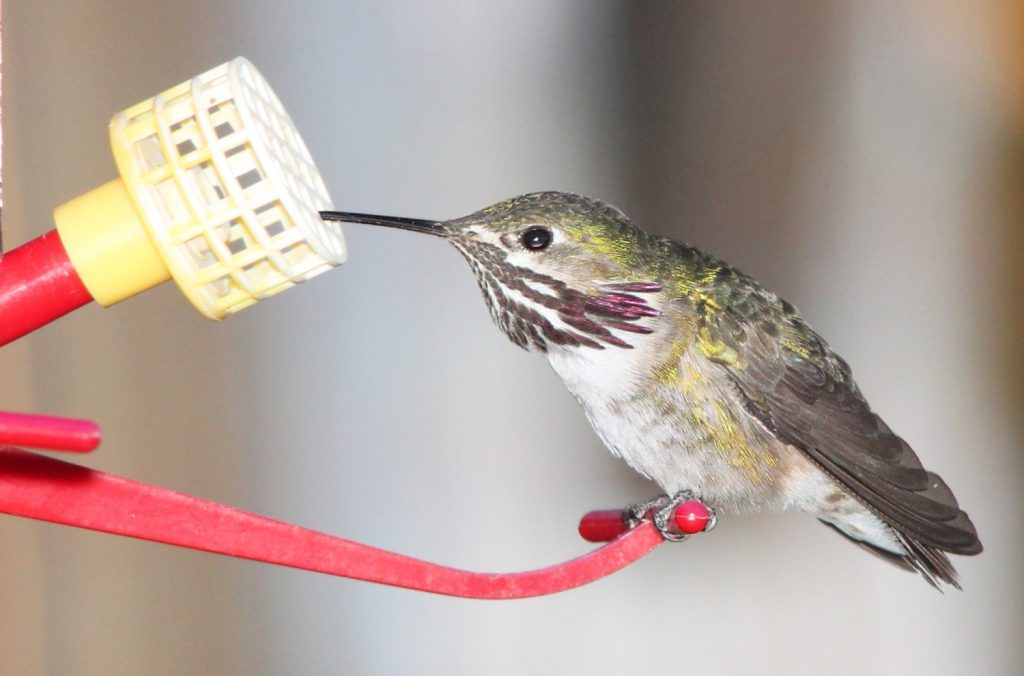
How to help a hummingbird with something stuck on it
Upon closer inspection of an injured hummingbird, you may be surprised to find that it isn’t actually injured at all — it just has something stuck on its feet, wings, or beak.
Sometimes, hummingbirds lean up against plant sap, and that sticky substance can glue their delicate feathers together.
Large spiders, like orb weavers, have been known to spin webs near hummingbird feeders and prey on these tiny birds. Occasionally, you’ll find a hummingbird trapped in a spider web, in which case, you’ll need to gently remove the bird from the webbing before it becomes a spider’s next meal!
If you find a hummingbird that has gotten into something sticky, hold the bird gently in one hand, and use a soft, damp cloth to wipe away the substance with the other.
You can add a drop of Dawn dishwashing liquid to the cloth to remove the substance if it’s super sticky. Avoid scrubbing the bird as this may damage its feathers and lead to an injury.
After cleaning the bird, if it feels up to it, you can simply release it. But, sometimes, hummingbirds will wear themselves out trying to break free of a sticky substance. So if the bird seems lethargic after you’ve cleaned it up, let it rest in a shoebox lined with a towel.
If, after removing the sticky substance, the hummingbird’s condition worsens, contact a wildlife rescue for more advice.
What if you find a baby hummingbird that has fallen out of its nest?
Baby birds fall out of their nests sometimes. Fortunately, they’re rarely seriously injured when they do so, so there’s no need to try to rehabilitate the bird.
If you’ve found a baby hummingbird on the ground, search around for its nest and put the little bird back in it.
Contrary to the old wive’s tale, the mother bird won’t refuse to care for the baby because it “smells like a human”.
Simply replace the bird and leave the area as quickly as possible. The mother bird is likely keeping a close eye on her nest from a perch nearby, waiting for you to leave so she can care for her baby.
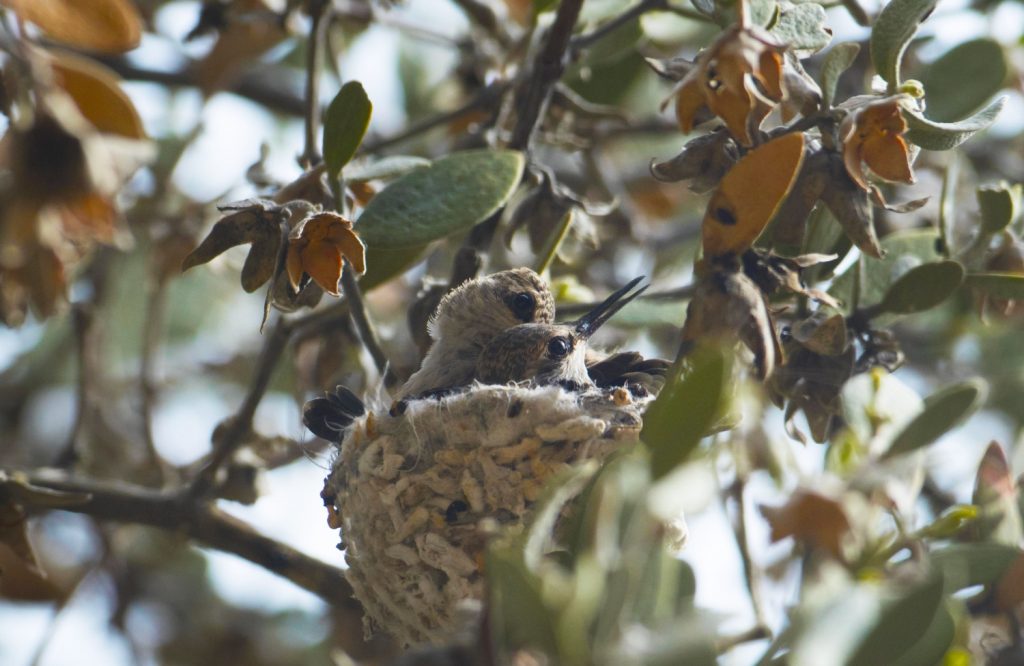
Should you house an injured hummingbird as it recovers?
No, you should not. There are very strict laws here in the United States prohibiting the average citizen from housing a hummingbird, whether the bird is injured or not.
In the U.S., persons found housing a hummingbird, whether they’ve made it a pet or are simply trying to help it recover from an injury, can face a fine of $20,000.
The Migratory Bird Treaty Act of 1918 prevents citizens from housing birds. This law was implemented to stop people from capturing, killing, trading, selling, or transporting birds.
It’s okay to help a hummingbird out by cleaning it up and offering it some food and temporary shelter while it recovers. But it is not okay to capture an injured hummingbird and turn it into a pet.
If you want to know how to help an injured hummingbird, the very best thing that you can do is contact a licensed hummingbird rehabilitator.
Wildlife rescues have the knowledge and experience to properly diagnose injured hummingbirds and to provide them with the best treatment possible so that they can be released back into the wild.
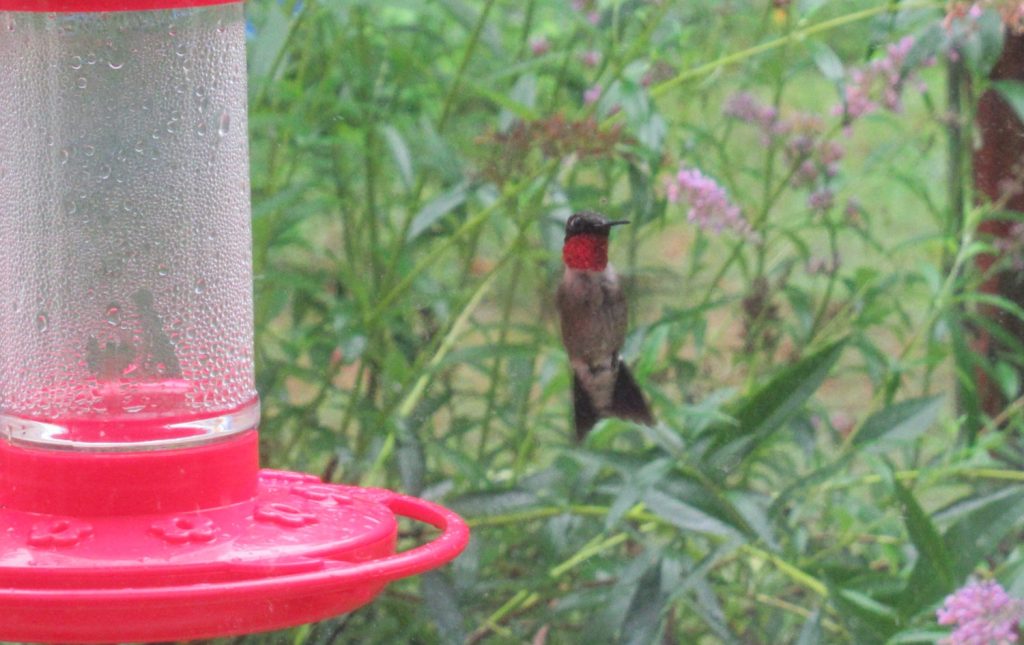
How can you prevent hummingbirds from getting injured?
Hummingbirds are excellent fliers, but sometimes they bump into things. There’s only so much you can do to stop them.
One way you can help your local hummingbirds is by placing anti-collision decals on your windows, so hummingbirds are less likely to fly into their own reflections.
Another thing you can do is remove spider webs from around your feeders and monitor the area for predatory insects, like praying mantises. If found, transfer these bugs to other parts of your garden, where they can continue to feed on pests, like aphids, without posing a threat to hummingbirds.
Bring outdoor cats inside so they can’t injure or prey on your local hummingbirds — or other backyard birds, for that matter.
Keeping your feeders clean by washing them weekly and replacing the nectar every 3 to 4 days will also help keep your hummingbirds healthy.
Dirty feeders and fermented nectar (especially if it’s been made with molasses or honey) are breeding grounds for deadly bacteria. Keeping your feeding station clean will help prevent hummingbirds from getting sick or sustaining a beak injury.
Knowing how to help an injured hummingbird will give these critters the best chance of recovery so you can continue to enjoy watching their flying antics in your backyard.
